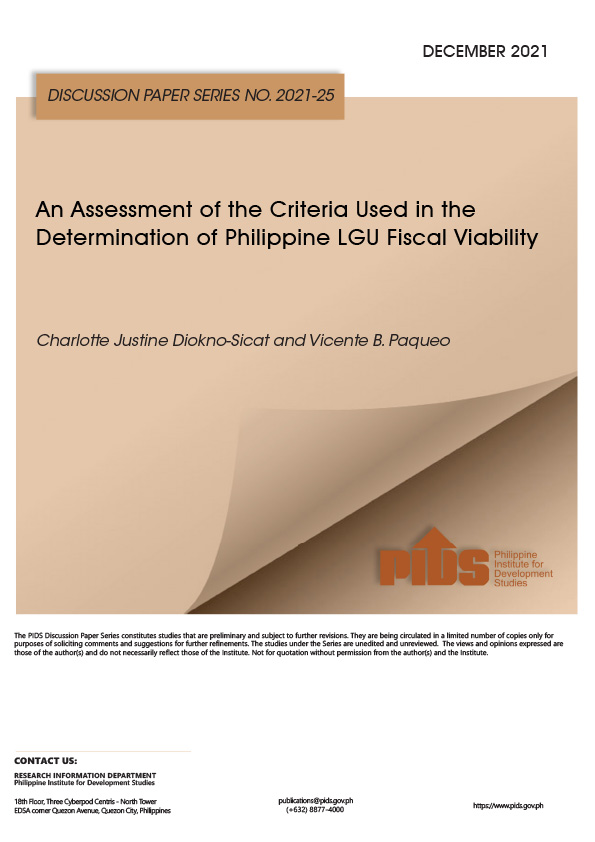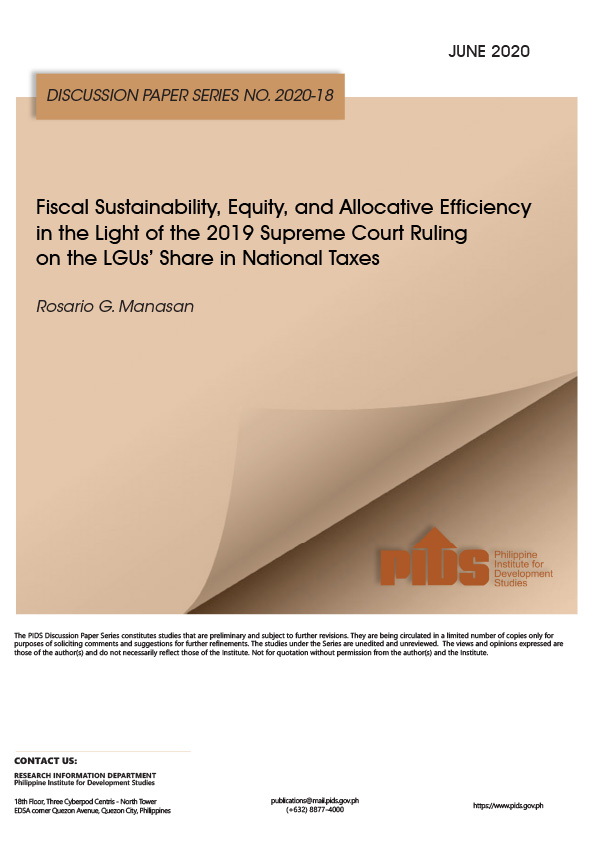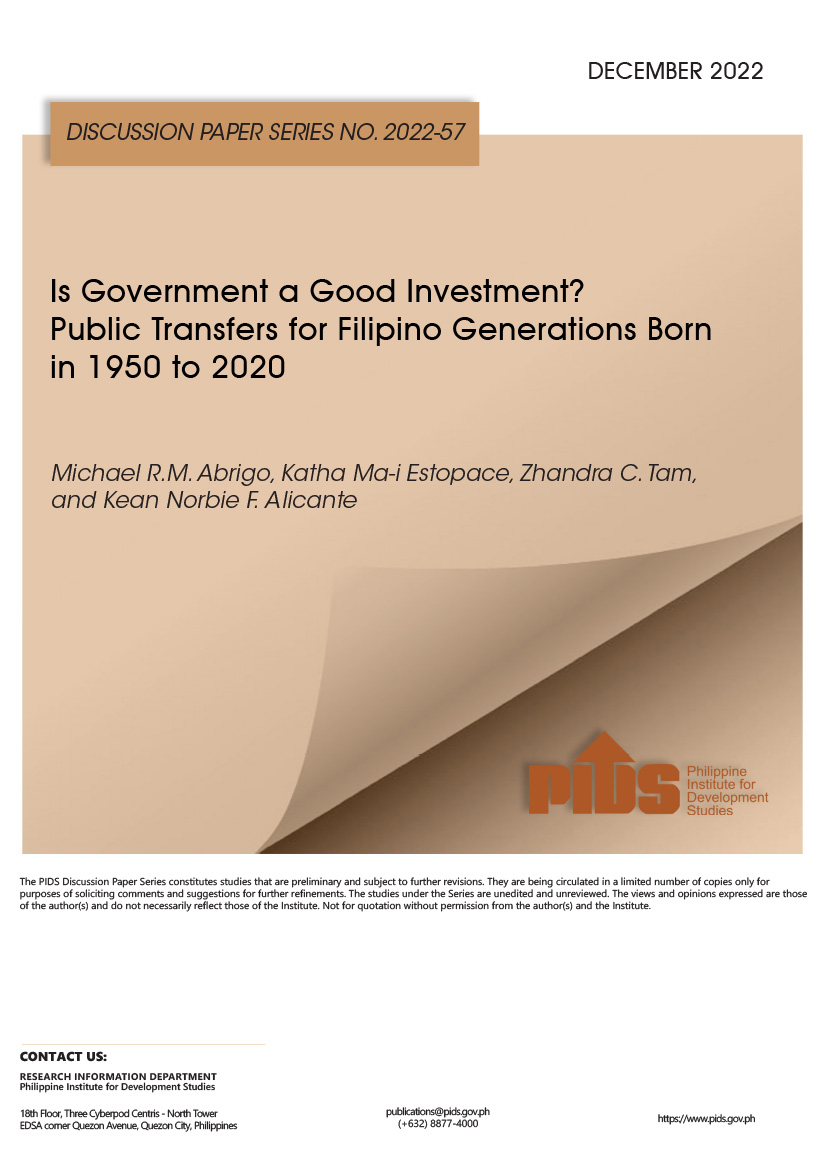This study examines the fiscal implications of the current criteria of establishing the fiscal viability of local governments in the Philippines. Since the passing of the Local Government Code (LGC) of 1991 thirty years ago, the criteria used to create/convert a local government unit (LGU), i.e., regular local income, population, and land area, has remained the same with the exception of the income requirement of cities. As a result of the current distribution of intergovernmental fiscal transfers, both across different levels of and within a level of local government (a portion of the intergovernmental fiscal transfer of an LGU is dependent on the number of same-level LGUs), there exists the incentive for lower-level LGUs to want to level up to get a larger share of transfers. From 2001 to present, there were 68 new cities (46.9%), 25 new municipalities (1.7%), and 107 new barangays (0.3%) created.
A possible effect is the creation of LGUs that are unable to fulfill mandates and deliver devolved functions and services. The evidence supports this with fiscal trends showing that provinces and municipalities effectively finance only almost a third of current expenditures while the stipulated requirements for provinces and municipalities cover only about 11% and 1% of total current operating expenditures, respectively.
In public sector literature, this issue is part of the literature in determining the optimal size of government which is basically dependent on the balance between welfare gains from bringing accountability and the provision of local goods and services closer to the citizens versus the cost advantages from serving a larger population at a higher level of government. The practical result has been the over-creation or fragmentation of LGUs in federal and decentralized countries. Some countries such as Canada and France have resorted to giving incentives to local governments that consolidate/amalgamate to improve the efficiency in delivering goods and services. Other solutions have been to create inter-LGU arrangements or special bodies to coordinate goods and services that cross boundaries but still have limited geographic coverage.
This study tests the impact of current fiscal viability indicators and explores other governance and political economy variables on local revenues and expenditures. Using unique cross-section data from a survey of municipal development planning practices, the results show that population, land area, poverty incidence, and LGU income classification are robust estimators for local revenues. Among the governance indicators used, such as the presence of an updated schedule of market value (SMV) and the number of years in office of the mayor, receiving the Seal of Good Local Governance (SGLG) award is the only significant one. For local government expenditures, population, land area, LGU income as well as the presence of the SGLG and an updated SMV are all significant. These results seem to suggest that the current criteria are still relevant, but the rest of the paper argues that minimum LGU income must be increased for provinces and municipalities, and, perhaps, impose an LGU income requirement for barangays.
Comments to this paper are welcome within 60 days from the date of posting. Email publications@pids.gov.ph
Citations
This publication has been cited 1 time
- DailyGuardian. 2022. Revisit income requirement for creation of LGUs – think thank. DailyGuardian.













